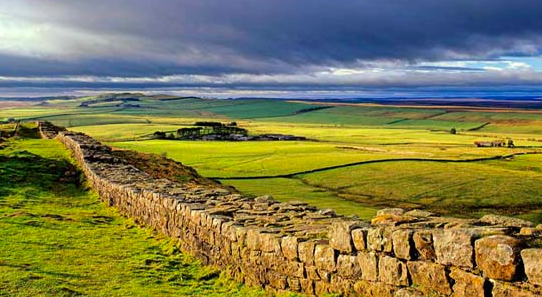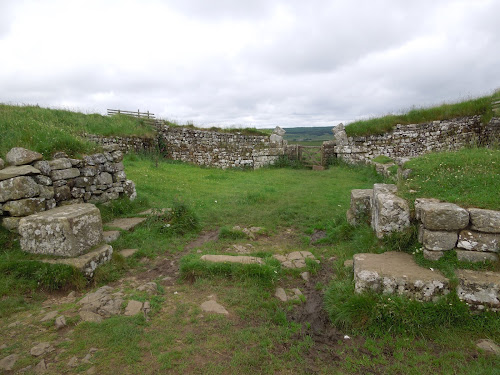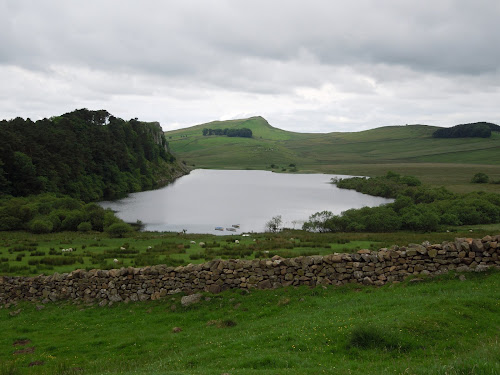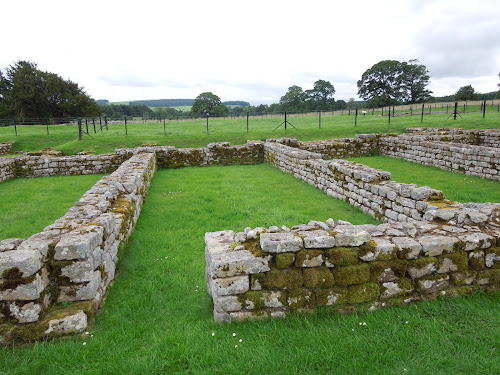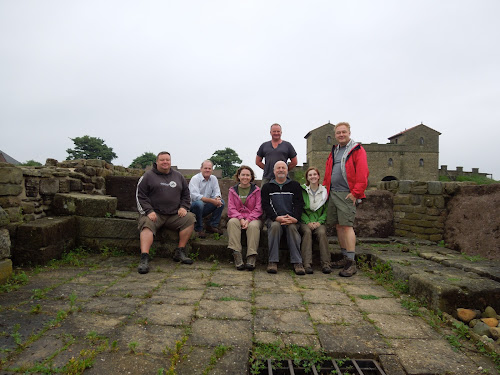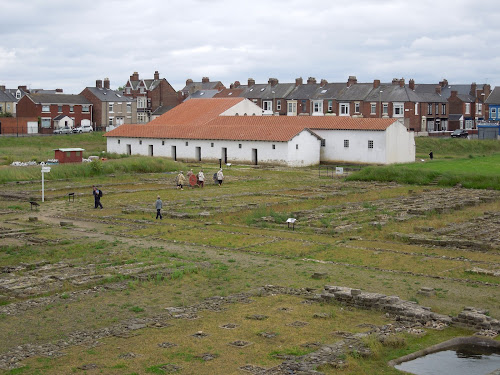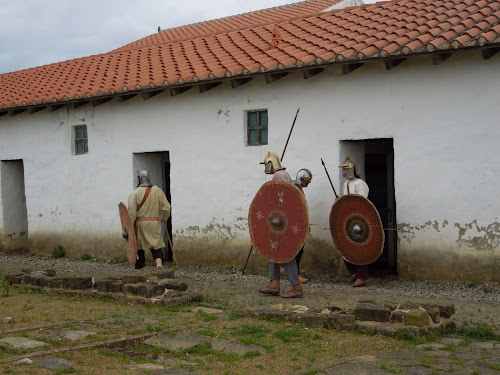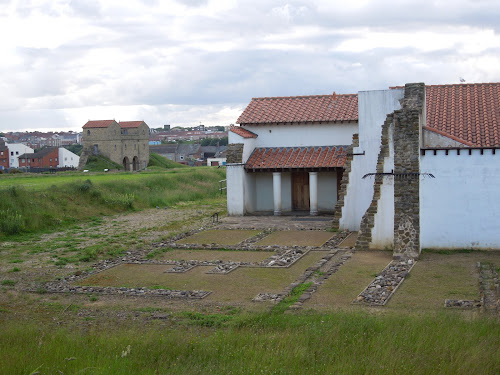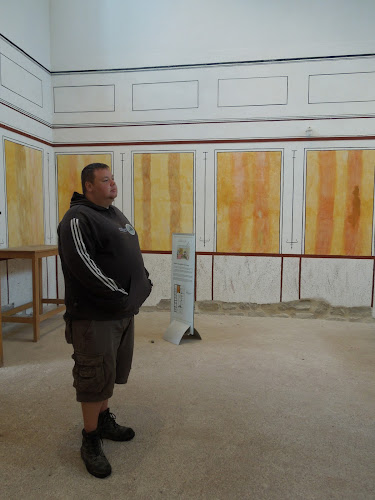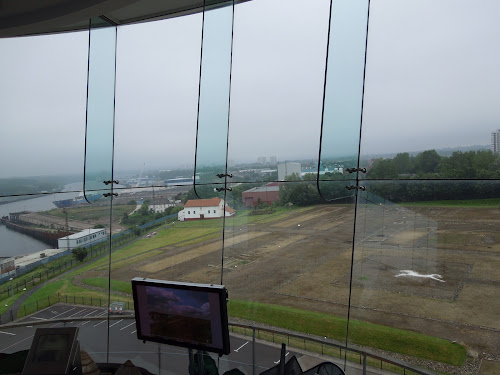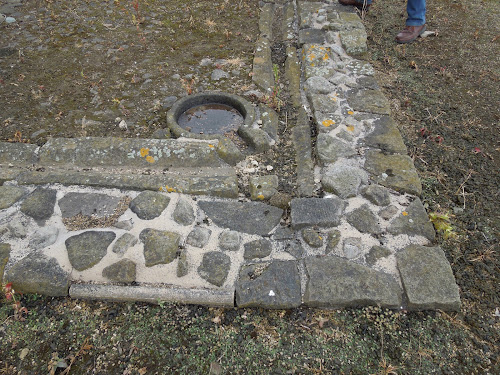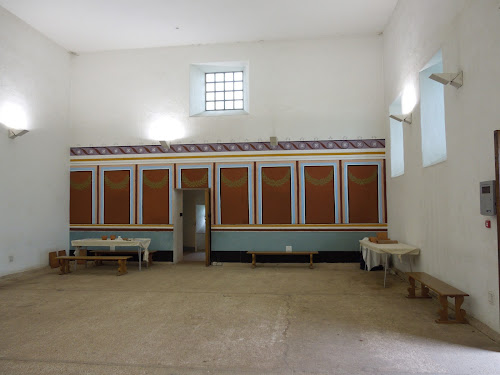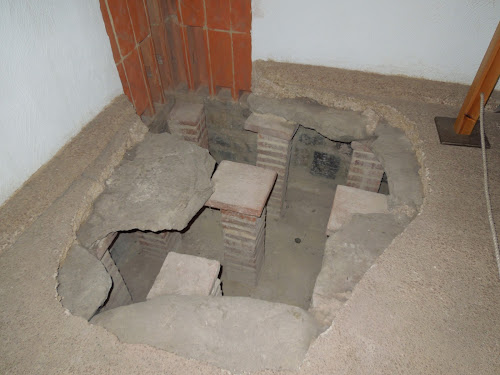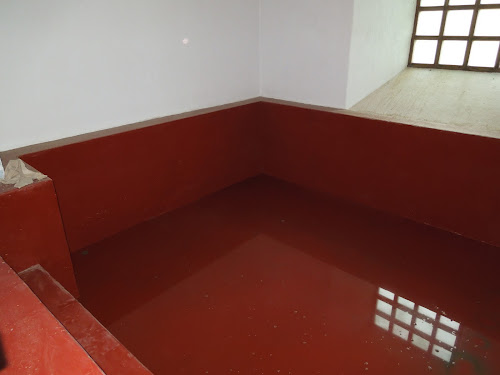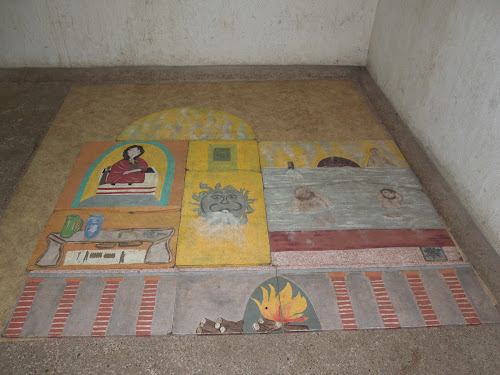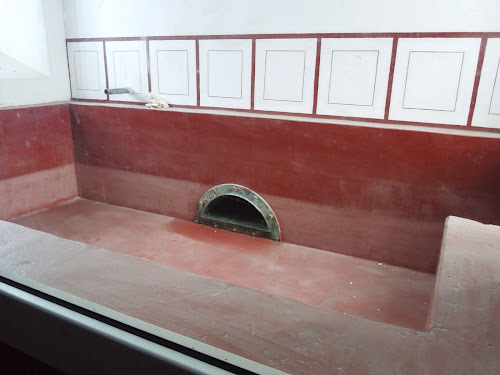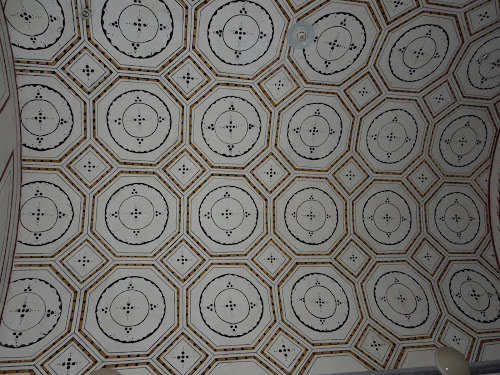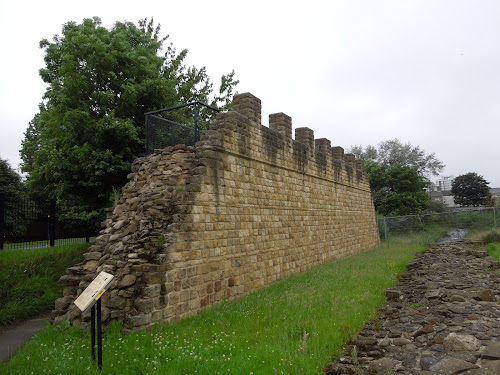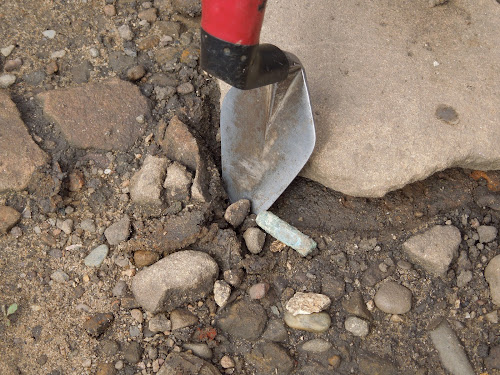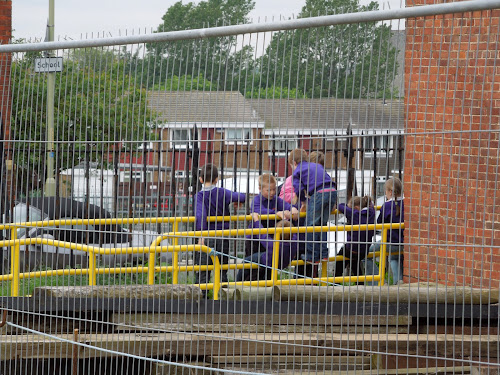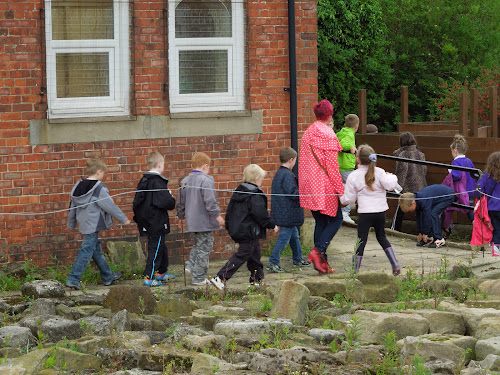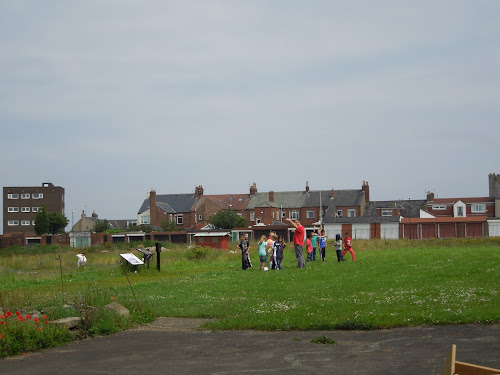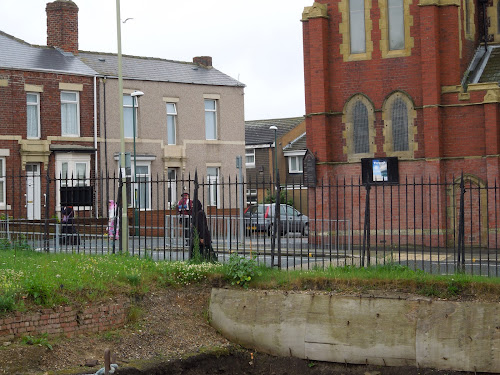Before I get into the actual work we are doing, here is a bit of background on the site itself. While experts on the subject are not entirely certain, the Romans may have occupied the site of Arbeia, or the Roman Fort at South Shields, as early as the first century AD. Arbeia itself was built around AD 160, so the site is a multi-period one, a detail that is important to the particular work we are doing. The Tyne River lies within site to the north, and the North Sea is a short walk to the east. The fort played an important role in the frontier system begun by the emperor Hadrian in AD 122, first as a garrison and later as a supply base for the 17 forts along the wall. The wall itself begins in Wallsend, just four miles to the west and continues west for 80 Roman miles.
The section we are working in, in the southern corner of the site, is actually outside the fort's wall and is what's known as the
vicus, or civilian settlement. Most of the vicus is covered with modern roads or buildings, so there isn't much available to excavate. Much is known about life inside the fort, but not much about outside the fort, so it is very exciting to be involved in such a project.
All that said, my first week on the dig has been spent working on a stretch of uncovered Roman road that emerges from below the edge of the modern road. In the photo below, you can see the road in the right hand corner of what we call "the pit."

Here is a closeup of the road's surface. You can see lots of different sizes and shapes of stones. Each size or shape represents a different level and time period. The road was repaired again and again over time, so we take it down one level at a time to help them learn about each period. The artifacts we find at each level provide clues. The most common artifacts, or finds, are bits of pottery, block tile, and bones.
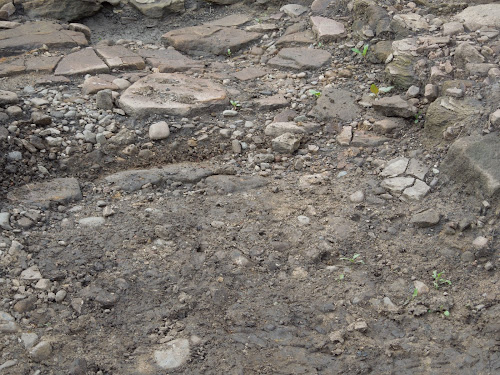
To clear away the stones, mud, etc, you use a trowel (more like a mason's trowel than a gardening one) and gently scrape. This is called cleaning. Whatever is worthless, gets pushed into a small hand shovel with your trowel and dumped into your bucket. If it's something of interest, it goes into your finds tray. In this picture, Laura, a local young woman who studied archeology in college, but just qualified to be a preschool teacher, and Maggie, an Earthwatch teammate, clean a section of the road.
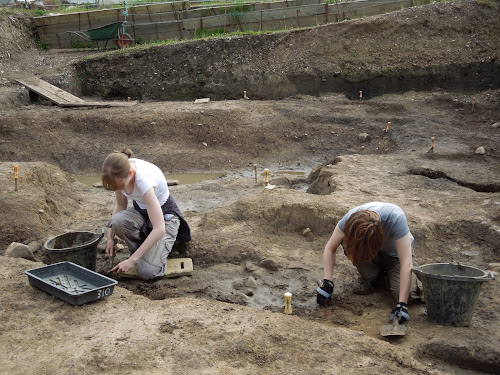
As soon as your bucket is relatively full, you carry it to the wheelbarrow and empty it. If the wheelbarrow is full, you wheel it up the ramp and to a dumping site not far from the pit. This entire process is a nice break from all the kneeling that is involved. It gives your knees a rest, and stretches out your back. Here is Dave, another local voluteer, emptying the wheelbarrow. Dave studied pre-history in college, but is a trained artist. He originally came to Arbeia to draw the finds for the project, but he got hooked on the archaeology itself! He is now one of our supervisors and teaching us how to speak Geordie. He's one of the funniest people I've ever met. His humor in the pit makes the time go by quickly.

On day two, I was lucky enough to find what they believe is a scrap of lead. You can see it touching the right edge of the trowel. This is highly unusual and is considered a "small find," because the Romans normally wouldn't have thrown away such a thing. Before I could remove it from the area, we had to stop work and mark the exact location where it was found. That is why the trowel was stuck in the ground.
The exact level, or depth, of any significant find must be measured. One person goes to the side of the building and finds the above sea level mark.
A measuring staff is placed in the exact spot where the artifact was found. (Keith, a fellow Earthwatcher is holding one in the picture below.) An optical line measure (what you commonly see surveyors using on a tripod), which has been synched up with the above sea level marker, is used to read the measuring staff, and the depth is then calculated.
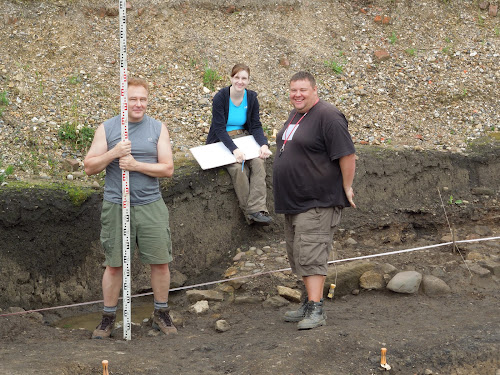
The exact spot within the area being excavated where the artifact was found also has to be recorded on a site plan. The grid, or frame, has been placed on the surface so that I can record the exact location.
The find is carefully placed into a small ziplock bag with airholes, to prevent further decay, and all of the location information we calculated is recorded on the bag. The finder (me in this case!) gets to record all of this into the official register book, so my name is now in the book as the official finder of the object. This whole process took the better part of an hour.
On day four, Keith found a piece of iron, and we went through the entire process again. It rained Thursday evening, so the site was deemed too slippery to work in on Friday morning. We were very lucky to have four straight days without rain, as the team before us only got 1 1/2 days worth of work in before the rain came pelting down and flooded the site. We spent part of our first day cleaning up the mud that accumulated from that rain. Looks like we'll have to do that again tomorrow!
